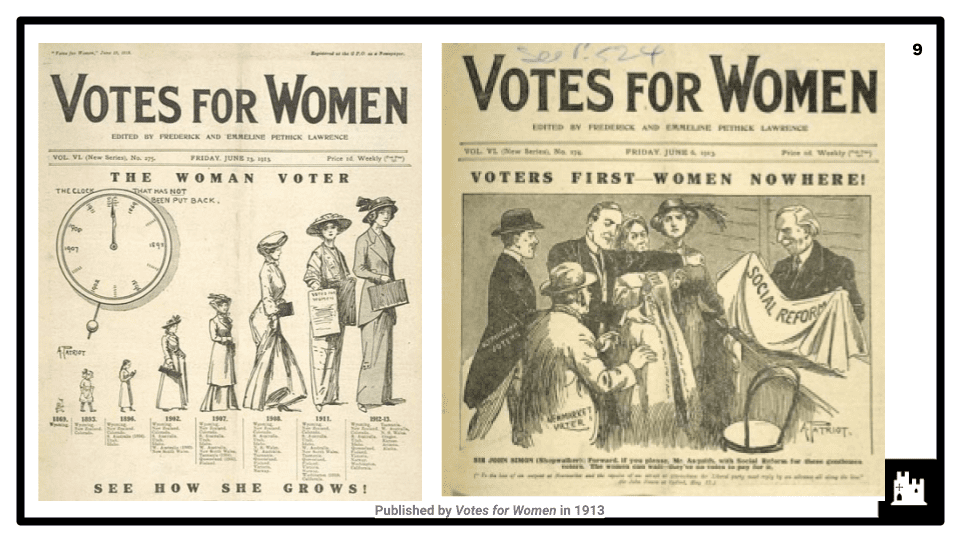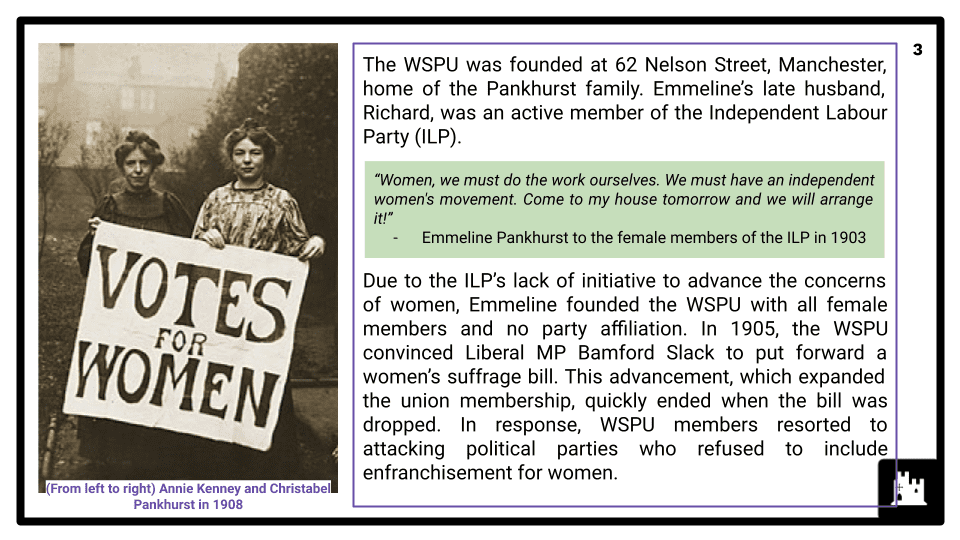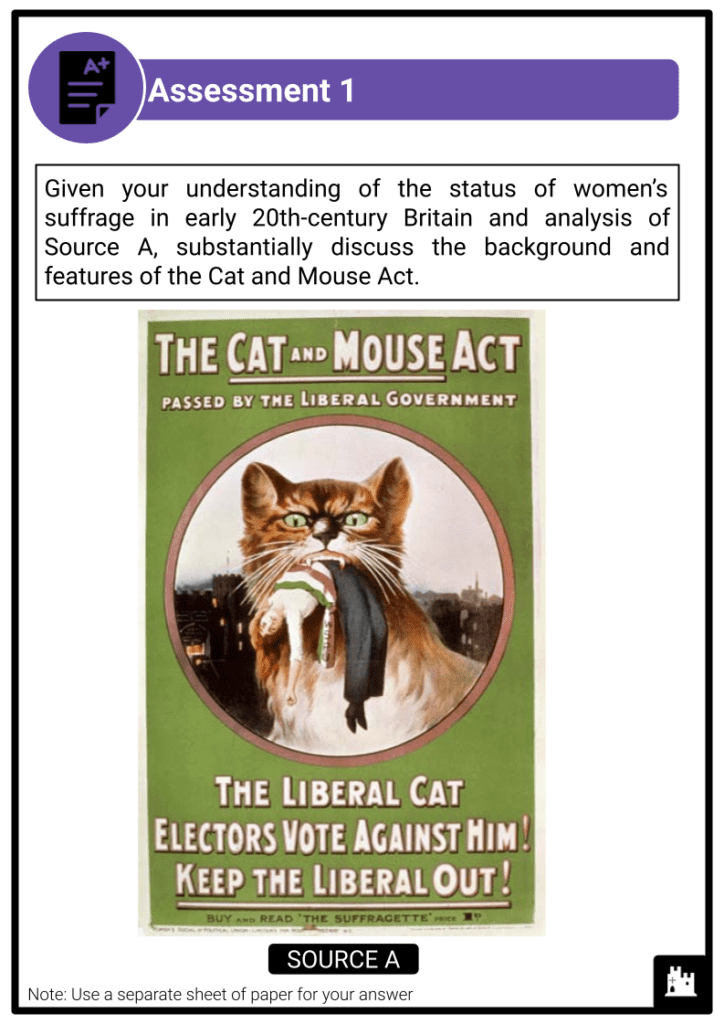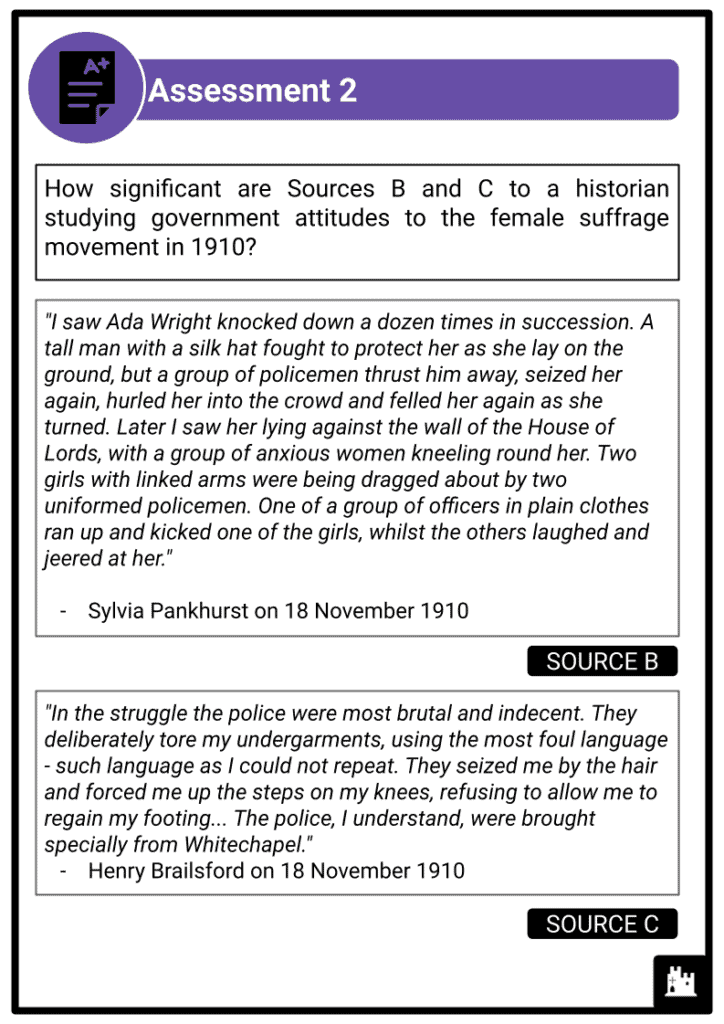Teach any Women’s Suffrage topic, no prep needed!
Do you want to save dozens of hours in time? Get your evenings and weekends back? Be fully prepared to teach any Women’s Suffrage A Level topic?
Every Women’s Suffrage topic is covered, and each module comes complete with:
A Level Women’s Suffrage Resources
At the end of the lesson, the students should be able to:
- Discuss the organisation of the WSPU and the reasons behind its militancy;
- Analyse the role of Emily Davison and the Pankhursts in the WSPU’s success; and
- Assess the attitudes of the government to female suffrage until 1913.






